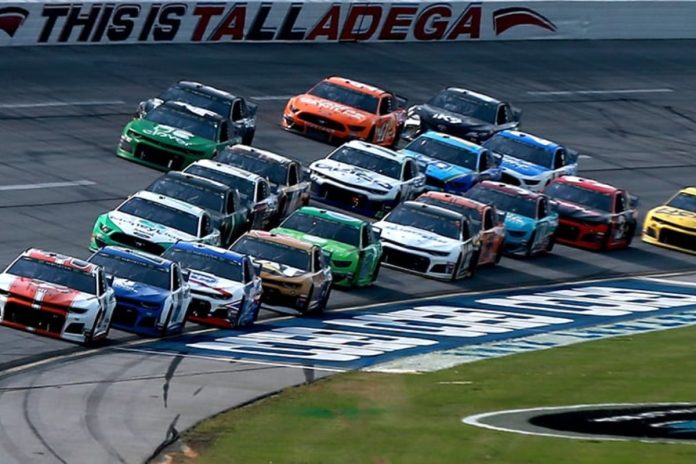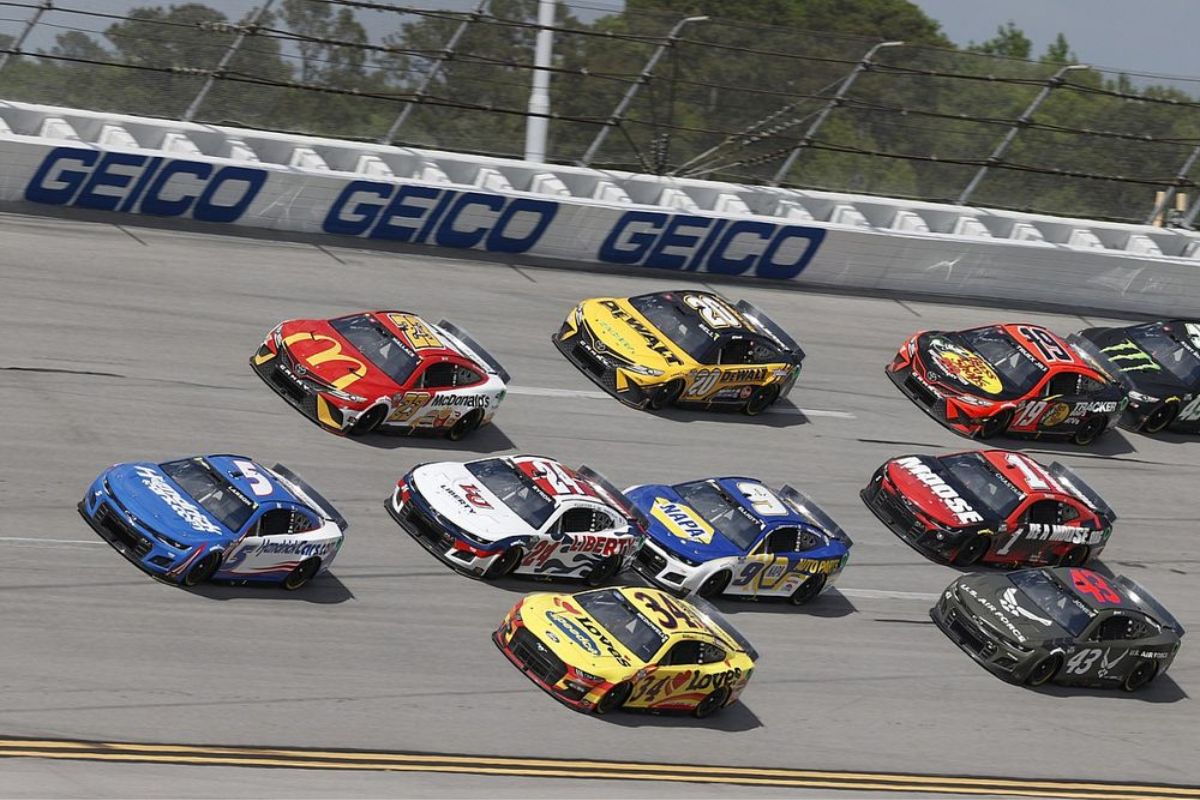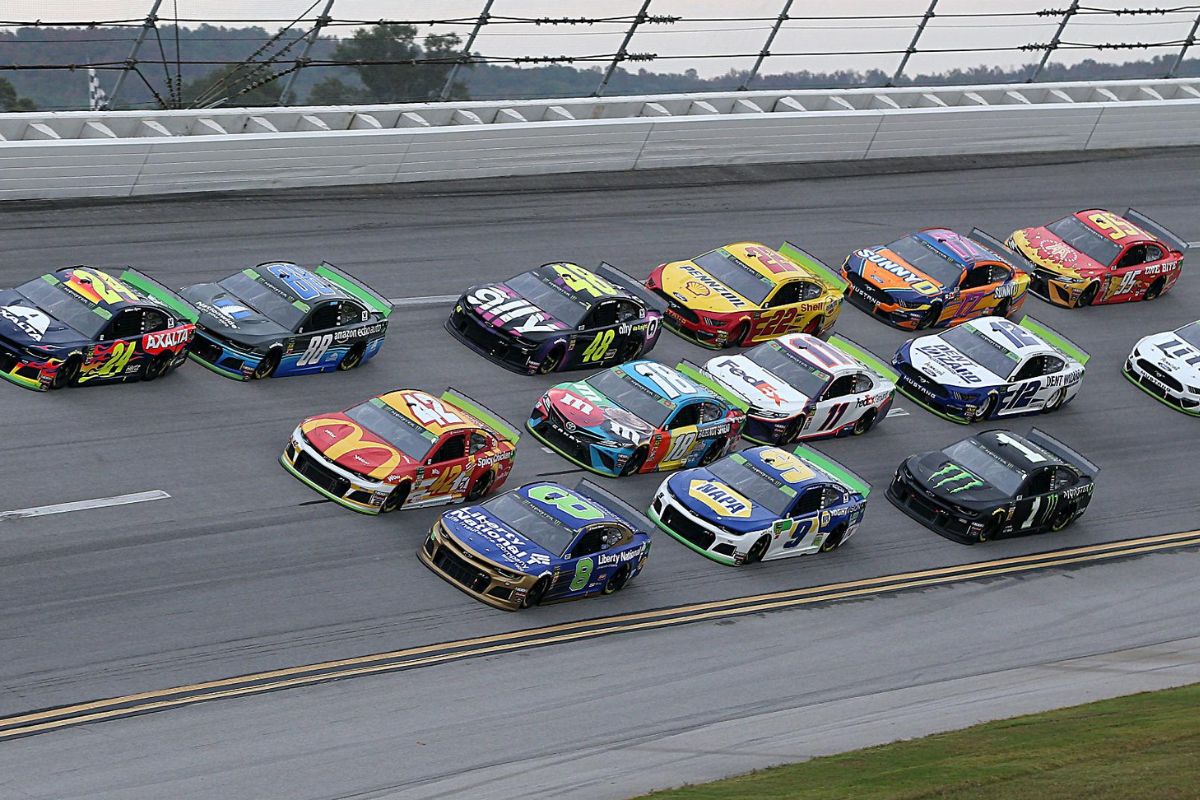Talladega’s Night Racing Hurdles: The introduction of night racing at Talladega Superspeedway is an ambitious proposal that brings many sophisticated challenges, primarily the high costs involved in necessary infrastructural upgrades. Implementing adequate lighting for the 2.66-mile track is not just a matter of bulb installation; it requires a holistic enhancement of the entire electrical system to support the massive energy demand. This undertaking raises critical questions about the feasibility of such an investment when compared against the expected increase in ticket sales and sponsor interest. As stakeholders consider these factors, one wonders whether the allure of night racing can truly justify the extensive financial outlay and operational overhaul required.
Key Takeaways
- Upgrading Talladega for night racing requires significant lighting and power grid enhancements.
- Safety concerns escalate with high-speed night races due to decreased visibility.
- The financial outlay for infrastructure improvements may not guarantee a proportional return on investment.
- Night races pose scheduling and logistical challenges, complicating coordination with other events.
- Maintaining long-term interest and managing operational costs post-upgrade are crucial for sustainability.
Talladega’s Night Race Dilemma
The 2024 NASCAR season keeps surprising everyone! Now, the Talladega Superspeedway officials are scratching their heads. They’re staring up at the sky, wondering what to do next. It’s like trying to figure out which way the wind is blowing on race day. These officials have to make some tough decisions, just like drivers making split-second moves on the track.
When Bob Pockrass posted the weekend Cup Series schedule, and the race was set for 3:20 PM EST, lots of people thought Monday might end up being race day instead. Why? Because there was a high chance of rain right at the start of the Cup race. It seemed like everyone was preparing for a possible delay. NASCAR fans know how unpredictable the weather can be, and this time, it looked like it might play a big role in the race weekend.
The foundation of this dilemma can be traced back to several key factors. To begin with, the sheer size of Talladega Superspeedway, which spans 2.66 miles, poses a unique challenge. Illuminating such a vast area to standards required for competitive racing at night necessitates a complex array of lighting systems. These systems must not only ensure uniform visibility to avoid creating zones of disparity that could endanger drivers, but they must also be resilient enough to withstand the environmental factors unique to Alabama.
Additionally, operational logistics such as crowd management, traffic control, and emergency services would have to be adapted for evening events. Each of these elements requires detailed planning and execution to maintain the standards expected at such a high-profile venue.
Infrastructure Challenges and Financial Realities
Addressing the infrastructure challenges and financial realities of introducing night racing at Talladega requires a careful examination of the existing power grid and substantial capital investments. The existing infrastructure at Talladega Superspeedway is not currently equipped to handle the immense energy demands that night racing would impose. The installation of adequate lighting alone, essential for such events, would necessitate a significant upgrade to the local power grid. This upgrade is not only about capacity but also involves ensuring stability and redundancy to avoid outages during critical race times.
Furthermore, the financial implications of these upgrades are formidable. The initial cost of enhancing the power grid, coupled with the expense of high-output lighting systems, represents a major financial undertaking. For NASCAR and the operators of Talladega Superspeedway, the return on this investment is uncertain. The cost-benefit analysis must consider not just the direct revenues from ticket sales for night races but also the long-term increase in operational costs associated with higher energy consumption and maintenance.
Fan Demands for Night Racing
Growing demands from fans for night races at Talladega Superspeedway highlight the necessity for NASCAR to consider modernizing this iconic venue, despite the logistical hurdles previously discussed. Enthusiastic pleas from the racing community underscore the potential benefits, emphasizing that night races could revive fan interest and potentially boost attendance and viewership.
“Not a chance. Sunday is a complete washout, so the cup race will be on Monday. Talladega needs to install lights. Having to hold over a day when the weather will be fine for racing on Sunday night is ridiculous.” – (A fan on X)
The clamor for evening events is not just about the novelty; it reflects a deeper desire for an enhanced spectator experience. Lighting up the track could transform the atmospheric dynamics, offering a cooler, more comfortable environment and possibly mitigating the stifling heat that often accompanies daytime races in Alabama. This adjustment could also align better with the lifestyles of contemporary audiences who may prefer attending sports events later in the day.
As mentioned before, switching to night racing at Talladega Superspeedway isn’t a walk in the park. There are some serious hurdles to overcome, especially when it comes to the infrastructure. It’s not just about flicking a switch and lighting up the track. It would be a real challenge to power the whole circuit for not just one, but two weekends of night races. And let’s talk about the money – Talladega County and NASCAR would have to dig deep into their pockets to make it happen. Bob Pockrass didn’t mince words when he pointed out this harsh reality.
“The argument against lighting Talladega would be you’d never plan to have a night race b/c also need better lighting in parking lots and more/better-lit roads leading in-and-out of track. So $$ for all those lights an insurance policy on chance rain stops in a four-hr window” – (Pockrass)
However, this implies significant reconstruction, causing disturbance that could last for several months in the county, leaving residents puzzled about the rationale behind such a substantial investment. Alternatively, NASCAR could potentially shoulder the investment themselves, but there are no indications of such intentions.
Rising Pressure on NASCAR Officials
It’s fair to say that fans haven’t been happy with recent decisions regarding race schedules in the sport. The unfortunate overlap of Easter Sunday with the Richmond race left many fans dissatisfied. Additionally, the possibility of fans having to skip the Talladega race due to work commitments on Monday has put officials in a tough spot.
With every passing time and the growing likelihood of rain on Sunday, the pressure mounts on NASCAR to stop making ‘excuses’ and yield to fans’ demands. Despite Bob Pockrass’ valid argument against the feasibility of a Talladega night race, fans didn’t hold back their criticism of NASCAR.
“Well, I say it’s worth it. NASCAR is doing well. Talladega is the best. They need to modernize and avoid Monday if possible this is the one that NASCAR and the track can control. There’s no more excuses in this modern era.” – (A fan on X)
“I kinda don’t care what it costs them, I want what I want dammit lol. And honestly what the fans want (within reason) should be NASCAR’s priority.” – (A fan on X)
While the allure of night racing is undeniable, the feasibility and prudence of such a shift require a meticulous, strategic approach to make sure that all factors are judiciously considered. This balancing act is pivotal in maintaining the integrity and popularity of the sport amidst evolving fan expectations and technological advancements.
Uncertain Future and Fan Expectations
As the debate over introducing night races at Talladega Superspeedway continues, the gap between fan expectations and NASCAR’s logistical capabilities becomes increasingly apparent. Amidst the clamor for enhanced spectator experiences, the sport’s governing bodies face a complex array of challenges that could shape the future of racing at one of its most iconic venues.
For many fans, the explanations provided by officials and insiders just didn’t cut it. One fan even went so far as to demand that NASCAR upgrade the infrastructure at Talladega to accommodate a race at night. It’s clear that fans are passionate about seeing some nighttime action at Talladega, and they’re not holding back in voicing their opinions. NASCAR might need to take note and consider the desires of their dedicated fanbase.
“I was thinking about this. There should be no excuse, I think every Cup track should have lights.” – (A fan on X)
- Infrastructure Adequacy: Upgrading the speedway to support night races demands significant investments in lighting and safety features.
- Financial Implications: The cost of such upgrades is substantial, and the return on investment is uncertain, given fluctuating attendance trends.
- Environmental and Community Impact: The introduction of night events could have broader implications for the local community and environment, necessitating careful impact assessments.
“Don’t need lights in parking lot hell I didn’t see one light pole at Martinsville parking lot.” – (A fan on X)
“Don’t need lights in parking lot hell I didn’t see one light pole at Martinsville parking lot.” – (A fan on X)
News in Brief: Talladega’s Night Racing Hurdles
The proposal of introducing night races at Talladega encompasses substantial infrastructural and financial challenges. The necessary enhancements to lighting and power systems, coupled with the enormity of investment needed, delineate a significant economic burden.
While the allure of enriched spectator experience and potential attendance growth is undeniable, the long-term feasibility and safety considerations impose critical uncertainties.
Therefore, careful deliberation and detailed planning are imperative for NASCAR and Talladega stakeholders in addressing these complexities.
Our Reader’s Queries
Q. What racetrack was used in Talladega Nights?
A. The adrenaline-fueled battles of NASCAR reach a crescendo at the iconic Talladega Superspeedway, affectionately dubbed “Dega” by fans and drivers alike. Nestled at 3366 Speedway Blvd, just north of Talladega in Alabama, this motorsports haven sets the stage for heart-pounding action and electrifying moments. The sprawling complex serves as a fitting backdrop for the intense competition that unfolds on its legendary banks, embodying the essence of speed and excitement that defines NASCAR at its finest.
Q. Why is Talladega famous?
A. Talladega Superspeedway holds a prestigious distinction in NASCAR: it boasts the record for the highest recorded speed by a NASCAR vehicle on a closed oval course. This remarkable feat was achieved on June 9, 2004, when racing legend Rusty Wallace blazed across the track at an astonishing 216.309 mph (348.116 km/h). Wallace’s lightning-fast performance not only solidified his status as a formidable force on the track but also underscored Talladega’s reputation as a venue where speed knows no limits.
Q. Is Talladega the biggest track?
A. Talladega stands as the longest oval track on the NASCAR circuit, stretching a formidable 2.66 miles (14,045 feet). To put its sheer magnitude into perspective, one lap around Talladega spans approximately the length of 468 football fields.
Q. How long is Talladega race?
A. Talladega Superspeedway spans an impressive 2.66 miles (4.28 km) in length, challenging drivers with its expansive track. During a 500-mile race at Talladega, competitors must conquer a grueling 188 laps to cross the finish line, showcasing both the endurance of the drivers and the demands of this iconic speedway.
ALSO READ: Talladega Superspeedway New Logo: A Bold Tribute to Racing Legacy





